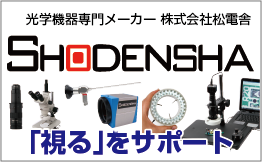The term “dynamic range” refers to the value representing the range of white to black that a single pixel can express. In the case of 8 bits, there are 256 levels, allowing a single pixel to express 256 shades of gray. With 12 bits, a single pixel can represent 4096 levels, enabling finer gray-scale representation, albeit with increased data volume. The dynamic range depends on the specifications of the image sensor being used, rather than the software or PC.
Now, the USB 3.0 2-megapixel monochrome camera (DN3RG-200BU) defaults to sending 8-bit data. Therefore, the 47fps listed on the HP website pertains to the fps at 8 bits. For the DN3RG-200BU, both 8-bit (default) and 10-bit (transferred as 16-bit) modes achieve 47fps.
Dynamic range varies depending on the model. The mention of transferring as 16-bit is due to the necessity of transferring images in either 8-bit or 16-bit format, where, despite technically having a 10-bit dynamic range, 6 bits are allocated to color, effectively resulting in a practical dynamic range of 10 bits.
The cameras operating in either 8-bit or 10-bit mode include:
– DN3G-30BU (USB3.0, 300,000-pixel monochrome)
– DN3RG-130BU (USB3.0, 1.3-megapixel monochrome)
– DN3RG-200BU (USB3.0, 2-megapixel monochrome)
The cameras operating in either 8-bit or 12-bit mode include:
– DN3R-500BU (USB3.0, 5-megapixel monochrome)
– DN3R-1000BU (USB3.0, 10-megapixel monochrome)
All USB2.0 cameras operate solely in 8-bit mode.



